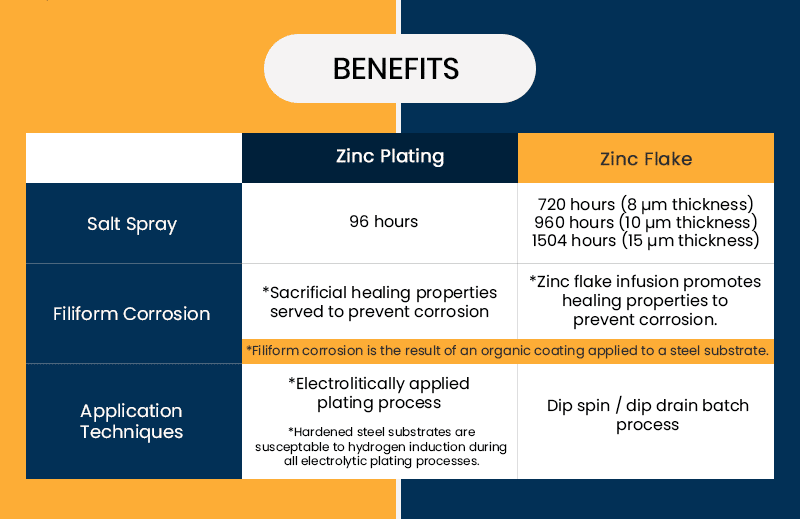The process is rack plating.
Zinc nickel plating thickness.
Cast iron requires nickel underplate thickness.
Standards for zinc nickel plating typically require unpassivated parts coated with 10µm of zinc nickel to withstand 500 hours or more of neutral salt spray testing before red corrosion.
Zinc nickel is a high performance coating that provides exceptional corrosion protection in harsh environments.
The zinc plating process can be considered an excellent primer for paint surfaces with the paint protecting the zinc giving a lasting protection.
Is 8 microns minimum.
Interpreting thickness and salt spray specifications for zinc nickel plating march 21 2013.
For some applications designers may opt to use zinc nickel plating instead of zinc plating for further corrosion resistance the above table will not be applicable.
What are the xrf testing requirements for plating zinc nickel alloy.
Please tell us what thickness you require on your purchase order.
For zinc nickel plating what should be the correct criteria to determine the correct plating thickness.
Accurate thickness measurement for both alloy deposits can be obtained using proper thickness standards.
We do not recommend powder coating.
For comparison zinc plated and passivated parts of a similar thickness are expected to achieve only 120 hours considerably less.
It can be formulated to meet a variety of corrosion resistance specifications.
X ray fluorescence xrf is a common technique used for quality control of zinc and zinc nickel alloy plating deposits.
There are a stream of zinc nickel applications for the automotive electronic aerospace and defense industries.

